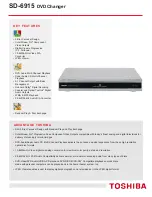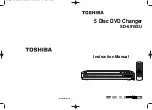
ADJUSTMENTS & OPERATION
CHECKING, ADJUSTING AND REPLACING KNIVES continued...
C. If any of the knives require an adjustment, slightly loosen the knife
locking bar (A) Fig.19 in each of the knife slots by turning the five locking
screws (B) clockwise into the locking bar just enough to relieve stress in
the cutterhead but not disturb the setting of the knives.
D. Once you have loosened the five locking screws (B) Fig.19, use the hex.
key supplied to turn the “jack screw” (C) Fig.19, turn clockwise to lower
the knife or counterclockwise to raise the knife on each end of the
cutterhead until the cutting edge of knife just touches the bottom of
gauge, see Fig.18. Then snug up the knife locking bar by lightly backing
out the five locking screws, two of which are shown at (B) Fig.19 against
the knife slot.
IMPORTANT: AT THIS TIME, ONLY TIGHTEN THE
KNIFE INTO THE SLOT ENOUGH TO HOLD IT IN POSITION.
E. If additional knives must be reset, repeat
STEP D.
F. After all three knives are set, back out and tighten the five locking screws
against the slot, starting with the end screws first, then the centre screws
until the knife is securely held in the cutterhead. Tighten the remaining
two knives in the same manner.
5. If the knives are removed for sharpening, care must be exercised in
replacing and resetting them, as follows:
A. Remove the three knives, locking bars and locking screws from the
cutterhead.
B. Thoroughly clean the knife slots, knife bars and screws. Check the
screws. If the threads appear worn or stripped or if the heads are
becoming rounded, replace them.
C. Insert knives, knife locking bars and screws into all three slots in the
cutterhead. Back out the locking screws just enough to hold all three
knives in the cutterhead.
D. Adjust all three knives.
6.
IMPORTANT:
After knives have been adjusted, replace top cover and dust
chute that were removed in
STEP 2
and return motor assembly to the
upright position. The motor assembly was pivoted forward in
STEP 3.
CONSTRUCTING GAUGE BLOCK
In order to check and adjust the height of the chipbreaker, infeed and outfeed
rollers and adjust the cutterhead parallel to the table, you will need to construct
a gauge block made of hard wood. This gauge block can be easily
constructed by following the dimensions in Fig.20.
FIGURE 19
FIGURE 20


































